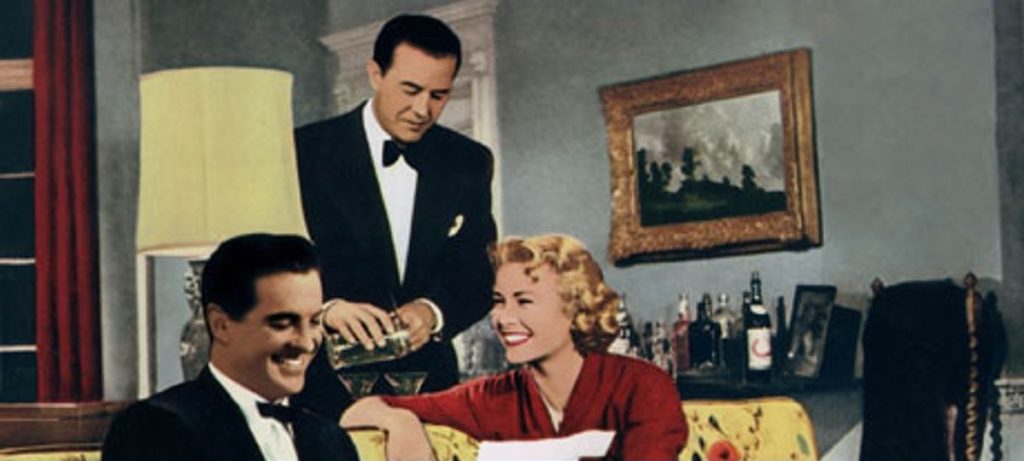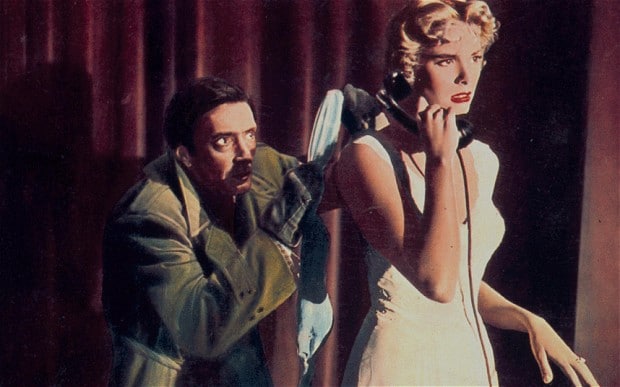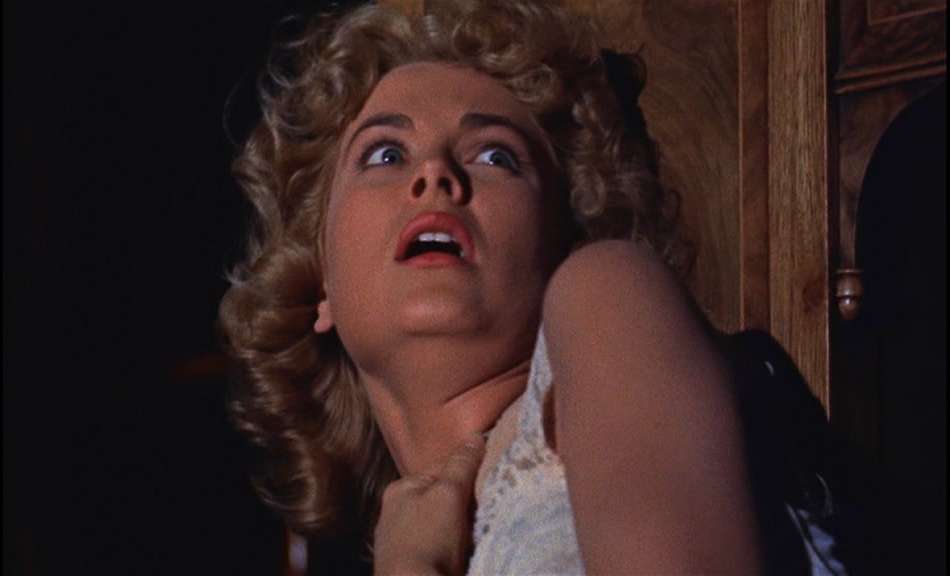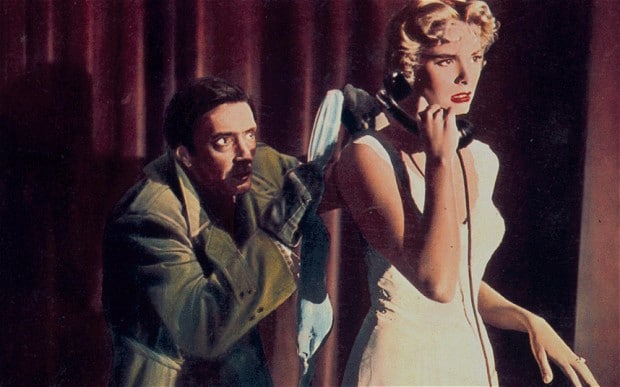Dial M for Murder, considered as a classic movie by many, diverts from the traditional oppressive thriller storyline and offers the audience a suspense of intrigue. The movie is adapted from the very popular mystery play by Frederick Knott of the same name. Directed by the Master of suspense Alfred Hitchcock, this movie is set in the city of London in the early 1950s and is a nigh perfect movie just like its tightly structured plot. Hitchcock’s movies are evergreen till date. They can be watched over and over again and yet the audience is divulged into a sense of fear, horror, and surprise every single time. Hitchcock with his exemplary brilliance sets the tone for thriller, suspense and horror right from the first scene. The majority of the film revolves inside the drawing room of Tony Wendice played by Ray Milland, where all the drama unfolds.
The story revolves around a couple Tony Wendice (Ray Milland) and Margot (Grace Kelly) living in an apartment in London. Tony discovers the extramarital affair that Margot and Mark Halliday (Robert Cummings) share through a series of letters. He intends to kill her and claim the assets that she owns for which he is the sole claimant. In this attempt, he carefully plans for over a year to not let anyone suspect him. In his attempt to keep his hands clean, he tricks one of his college acquaintances Swann (Anthony Dawson) into murdering his wife and offers him 1000 pounds. He threatens to blackmail him if he fails to do so. How Swann executes his murder plan and how the mystery is solved is delivered in a series of interesting, unpredictable twists and turns.

Given the fact that the movie came out in a period when there was a lot of craze for 3-d, a lot of low shots could be seen. But the movie was primarily released in 2-d all-around the world. One particular shot where Tony explains Swann about the murder plot is taken as a overhead shot sequence leaves the audience in awe at the director’s brilliance. Since the majority of the movie takes place in a tight space, the cinematography is not much of a visual treat but what holds the thread is its clever gripping story line.
Lot of intricate sublime details have been woven in the movie. Like in the beginning of the movie where Margot innocently asks if there is a possibility for any criminal to commit a crime without leaving any trail. The witty answer given by Mark and the sheepish smile on Tony’s face is a hint as to what one can expect from the movie. Hitchcock’s movies are known for their clever dialogues and this film serves to be of no exception.

In the scene where Margot confronts Swann, the scene is filmed to perfection with an incredible intensity and can easily be acclaimed as one of the best scenes in the movie. Also, the sound track does immense justification in keeping up to the momentum of the thriller mode.

Ray Milland, playing the treacherous villain easily convinces us with his portrayal of snake in the grass act. Grace Kelly is perhaps one of Hitchcock’s favorite lead ladies and her mere presence in the screen indicates why. Be it the scene where she conceals her feeling for her lover in front of her husband or where she confronts a near death experience, her eyes emote them all. And we can’t help but notice her flawless beauty coupled with some impeccable acting skills. Robert Cummings also delivers a good acting and adds to the charisma of the movie.
Also Read: The Master of Suspense: Alfred Hitchcock
Numerous intricate, subtle and surreal elements collectively make up the plot. As the tension builds up to the climax Tony asks his wife if she wants a drink. This is a subtle anecdote to the first intimate scene between Margot and Mark, where Margot offers Mark a drink. All in all, Dial M for Murder is a thoroughly enjoyable star studded saturday night classic flick which will make you yearn to see more of Hitchcock’s masterpieces and of course Grace Kelly just like we did(wink wink).

